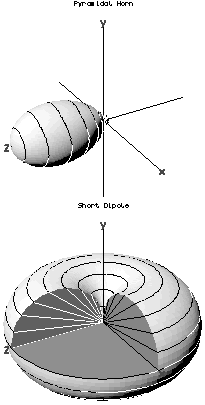As a new pilot I have a question about upgrading the ST16 with the kit that provides a second antenna and the flat wi-fi antenna to the standard controller. They aren't much money $40, so that is not the issue---The issue is---is it worth doing? Thanks.
You are using an out of date browser. It may not display this or other websites correctly.
You should upgrade or use an alternative browser.
You should upgrade or use an alternative browser.
ST16 question
- Thread starter Anjison
- Start date
I did it to my back up ST16 & H480. You probably won't notice any difference unless flying BVLOS, but it was fun to open up the ST16 and do the mod anyway.
h-elsner
Premium Pilot
- Joined
- Mar 23, 2016
- Messages
- 2,395
- Reaction score
- 2,154
- Location
- Bavaria / Germany
- Website
- h-elsner.mooo.com
Put the second 2.4GHz Antenna from inside to outside makes not much sense. The difference is marginal but the risk to put antennas in wrong direction is high. The best effect is when the two 2.4GHz antennas have an angle of 90° to each other. With the horizontal antenna inside and the rod antenna outside this is given by default (intuitive). But if both are outside the default is to have both in the same direction - wrong. It is then in your rsponsibility to do it right and this is not intuitive.
But the patch antenna for the 5GHz video downlink makes sense. Good to have both. The mushroom is an omnidirectional antenna. Good conditions around you, no matter where the bird is but lower range.
The patch antenna is more unidirectional which leads to more range in this direction. But you can lose the signal if you do not point the antenna to the bird.
If you can buy the patch antenna only (YUNST16109) you can use the optimal antenna for your current task.
br HE
But the patch antenna for the 5GHz video downlink makes sense. Good to have both. The mushroom is an omnidirectional antenna. Good conditions around you, no matter where the bird is but lower range.
The patch antenna is more unidirectional which leads to more range in this direction. But you can lose the signal if you do not point the antenna to the bird.
If you can buy the patch antenna only (YUNST16109) you can use the optimal antenna for your current task.
br HE
Is that why I saw in the German H3 demo video that the 2 stick antenna were angled away from each other at, you guessed it, 90-deg?The best effect is when the two 2.4GHz antennas have an angle of 90° to each other. With the horizontal antenna inside and the rod antenna outside this is given by default (intuitive). But if both are outside the default is to have both in the same direction - wrong. It is then in your rsponsibility to do it right and this is not intuitive.

h-elsner
Premium Pilot
- Joined
- Mar 23, 2016
- Messages
- 2,395
- Reaction score
- 2,154
- Location
- Bavaria / Germany
- Website
- h-elsner.mooo.com
Yes, that's the way you should do. Same as the antennas at receiver side:

One of both antennas has always a good signal, no matter where the transmitter is. Or both antennas have a fair signal. Hoever this 90° rule avoids that both antennas are pointed to each other with minimum range.
See radiation pattern of the different kinds of antenna:

 en.wikipedia.org
en.wikipedia.org
br HE

One of both antennas has always a good signal, no matter where the transmitter is. Or both antennas have a fair signal. Hoever this 90° rule avoids that both antennas are pointed to each other with minimum range.
See radiation pattern of the different kinds of antenna:

Radiation pattern - Wikipedia
br HE
- Joined
- Jul 14, 2019
- Messages
- 147
- Reaction score
- 74
- Age
- 59
This is what I did works greatYes, that's the way you should do. Same as the antennas at receiver side:
View attachment 18635
One of both antennas has always a good signal, no matter where the transmitter is. Or both antennas have a fair signal. Hoever this 90° rule avoids that both antennas are pointed to each other with minimum range.
See radiation pattern of the different kinds of antenna:

Radiation pattern - Wikipedia
en.wikipedia.org
br HE
Similar threads
- Replies
- 1
- Views
- 675
- Replies
- 4
- Views
- 302
- Replies
- 2
- Views
- 489
- Replies
- 9
- Views
- 421


